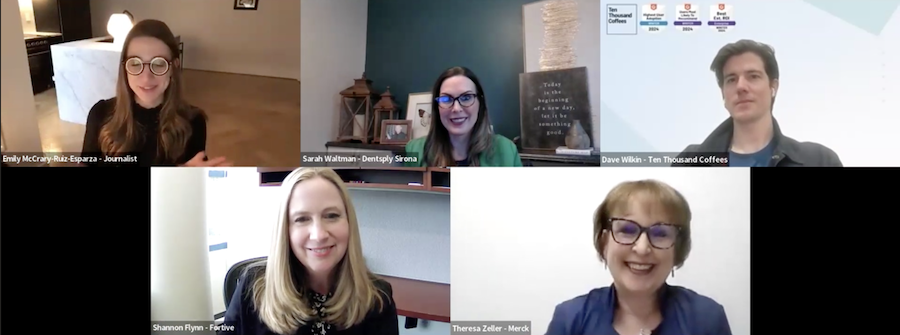Boosting Employee Motivation by Focusing on Internal Mobility


The Great Reshuffle may have officially reached its end. The labor market is tightening, voluntary job quits have been steadily declining over the last year, and large-scale layoffs have spooked some would-be job hoppers. Recruiting firm Robert Half found that 36% of workers plan to look for a new job in 2024. Last year, that figure was 49%.
Workers seem keen to stay where they are for the moment, yet there’s no indication that employees are willing to put the brakes on their careers. They may stall anyway. According to a 2024 report from Gartner, 89% of HR leaders say career paths organization are unclear, and fewer than one in three workers say they know how to progress their career in the next five years.
Shannon Flynn is VP of corporate human resources at global industrial tech firm Fortive Corporation. She’s worried about employees’ lack of direction, and wonders if HR could be standing in the way.
“We have so much opportunity to move people around, but the employees don’t see it,” Flynn said during From Day One’s March virtual conference on energizing workers. “The starting point for all of us should be, ‘what’s getting in the way of our employees having visibility into that, and what can we do to remove it?’”
Turning Networks into Opportunities
“A lot of the CHROs and heads of talent we work with are starting to help their colleagues think more like a career lattice than a career ladder,” said Dave Wilkin, founder of digital networking platform Ten Thousand Coffees, who joined Flynn and leaders for the panel discussion. But a career lattice doesn’t form by accident, Wilkin said. Landing those next moves–whether vertical or lateral–has a lot to do with who you know. “Ultimately, opportunities are found through networks.”

Opportunity networks aren’t necessarily equitable; they are often sorted by race or gender or and especially seniority. According to data from LinkedIn, in 2024 internal mobility rates are up 30% since 2021, yet it’s people at the manager and director levels who are most likely to move–more than twice as likely as individual contributors. To extend opportunities to all, Wilkin says, networks cannot be accidental. Employers must help workers form relationships across the organization.
Envisioning New Career Maps
To help workers see what they can reach for, companies once relied on career mobility maps, but those quickly expire, said Sarah Waltman, VP of talent management and organizational development at dental products maker Dentsply Sirona. Waltman’s answer to rigid maps is a flexible exploration tool. “We provide a template that [employees] can use to explore the organization through networking, through conversation, through the tools we have in place for sponsorship, mentorship, or coaching. It’s almost like a treasure map, where they can explore different methods to discover other things that they could do.”
Fortive, which is the parent of more than a dozen companies, did give career mapping a go, but the company wasn’t concerned about traditional models. “The arrows were pointing everywhere,” said Flynn, describing the final product. “If I start here as a financial planning and analysis person, my next move could be a senior person in the same role at the same size company, it could be the same role at a larger company, or it could be this other thing. What we showed was movement up, down, back and forth, and diagonal.”
Flynn based the maps on the real paths its employees had taken, then invited leaders to share their stories at work functions, “and it quickly demonstrated that none of them took a purely vertical path,” she said. “All of them had taken some kind of diversionary role that allowed them to get experience, it made them better in that new role.”
Building the Experience
Waltman encourages those wanting to climb the ladder to look for extracurriculars to build their skills. Employee resource groups, or ERGs, have at times been criticized for being non-promotable work, yet Dentsply Sirona considers them leadership skill-builders. “We have a large participation in employee resource groups,” Waltman said. “So what I encourage you to do is, if you’re trying to build management skills, but you’re not a manager, why not become a leader of one of these groups?”
Merck’s global head of integrated learning experiences, Teresa Zeller, surveys employees three to four times per year about the learning and development opportunities they’ve sought. “We have stressed in our organization that the breadth helps you to ultimately get to a higher altitude,” she said. The message is reflected in the survey answers. Merck’s workforce uses everything from company-sponsored learning and external training programs to gig and short-term assignments, mentorship, sponsorship, knowledge-sharing, conferences, and ERGs to build careers.
“As people start to see that the individuals who are going broad are actually moving in the organization, not only does it broaden their experiences, but it gives them meaningful work, it gives them bounce,” Zeller said. “Oftentimes they find an area they would have never stumbled into before, then they decide, ‘this is actually the career for me.’”
Emily McCrary-Ruiz-Esparza is a freelance journalist and From Day One contributing editor who writes about work, the job market, and women’s experiences in the workplace. Her work has appeared in the BBC, The Washington Post, Quartz, Fast Company, and Digiday’s Worklife.
The From Day One Newsletter is a monthly roundup of articles, features, and editorials on innovative ways for companies to forge stronger relationships with their employees, customers, and communities.